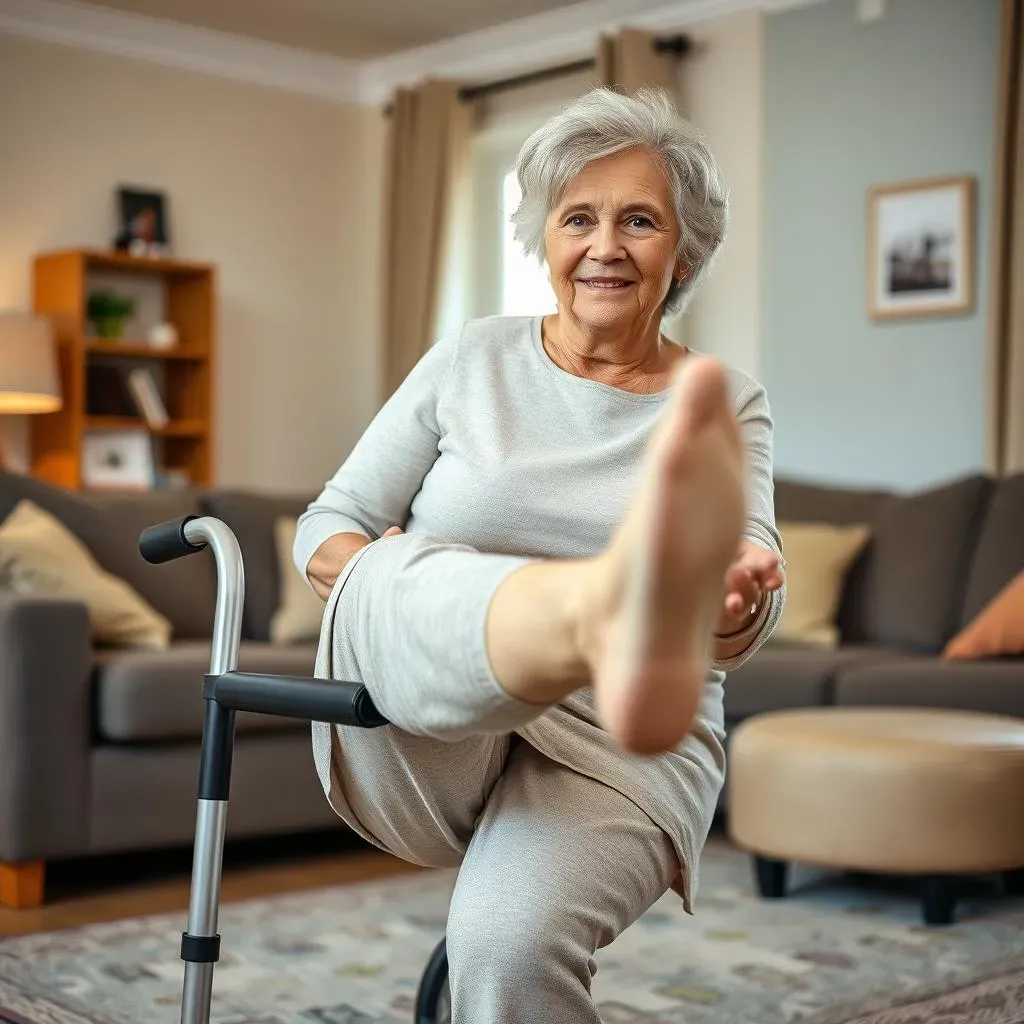Table of Contents
Are you ready to feel stronger, more stable, and ready to tackle anything? As we get older, keeping our legs strong becomes super important. It's not just about looking good, it's about staying active, preventing falls, and making everyday tasks easier. I've seen my own grandparents struggle with simple things like getting out of a chair, and it really hit home how crucial leg strength is. That's why I'm so excited to share these easy and effective leg workouts at home for seniors. This isn't about grueling gym sessions, it’s about simple exercises you can do right in your living room. We will start by talking about why these workouts are so important for us, and then we'll go through 12 simple exercises that can help you move better, feel better, and stay independent. We'll also cover how to start safely and some tips for getting the most out of these leg workouts at home for seniors. Get ready to feel the difference!
Why Leg Workouts Are Crucial for Seniors
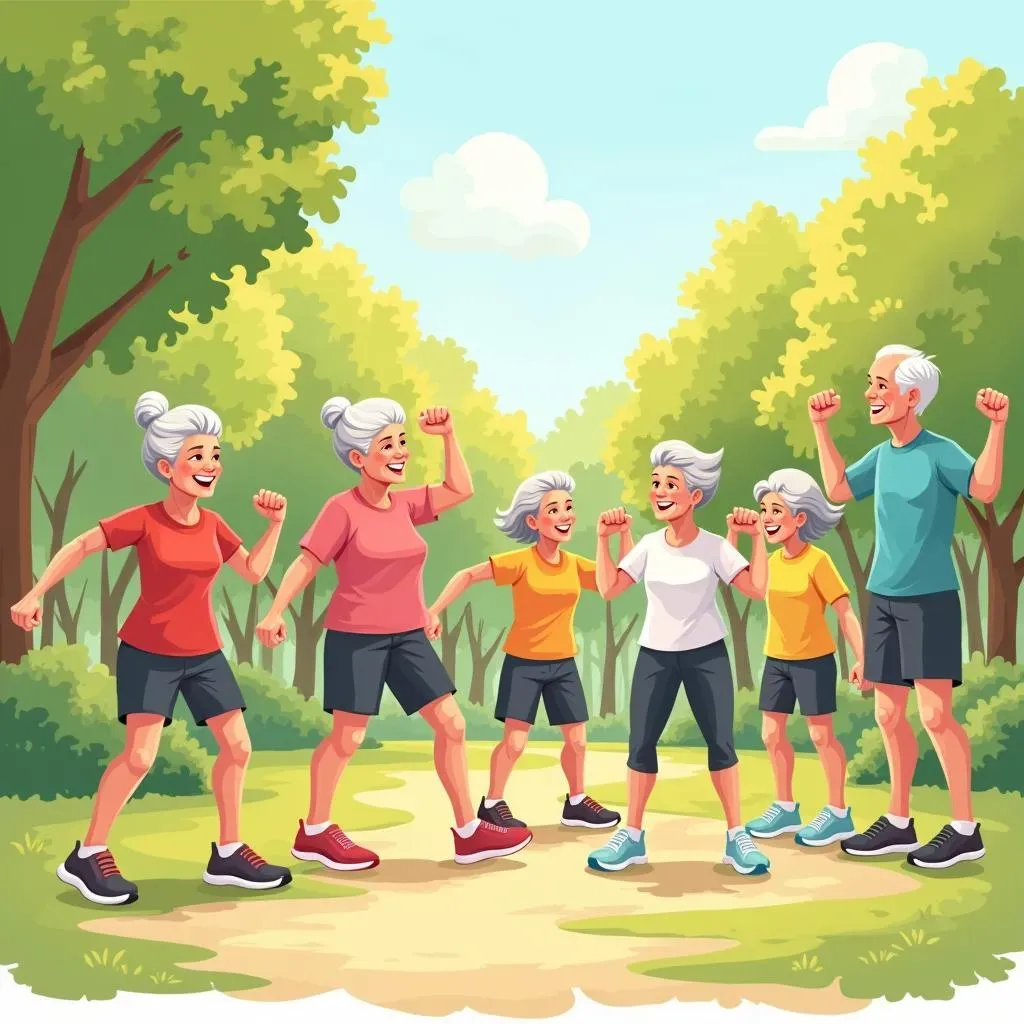
Why Leg Workouts Are Crucial for Seniors
Okay, so let's talk about why leg workouts are like the secret sauce for staying awesome as we get older. It's easy to think about working our arms or abs, but honestly, our legs are the unsung heroes of our bodies. They're what get us from point A to point B, help us keep our balance, and give us the power to do everyday stuff like climbing stairs or carrying groceries. When we skip leg day, we're basically saying "no thanks" to independence. I've seen so many people lose their confidence just because they're not steady on their feet. But here's the good news: it doesn't have to be that way. Working on our leg strength isn't about becoming a bodybuilder, it's about making life easier and more enjoyable. It’s about being able to play with grandkids, walk around the park, and just do the things we love without feeling like we're going to tip over. Strong legs mean a strong foundation for everything else.
Think of your legs as the pillars of a house; if they're weak, the whole structure feels wobbly. It's really that simple. When we strengthen our leg muscles, we're not just building physical power, we're boosting our overall quality of life. I've read countless studies that highlight how improved leg strength directly correlates with a reduced risk of falls, which is a major concern for seniors. Plus, strong legs make everyday tasks like getting out of bed, walking to the mailbox, or even just standing for a longer period of time much more manageable. It’s about maintaining our independence and staying active in the community, I’ve seen firsthand how a little leg work can really change someone’s life.
Benefit | Why it Matters |
|---|---|
Improved Balance | Reduces the risk of falls |
Increased Mobility | Makes daily tasks easier |
Enhanced Independence | Allows you to stay active and engaged |
Better Posture | Supports your spine and reduces back pain |
Effective Home Leg Exercises for Seniors
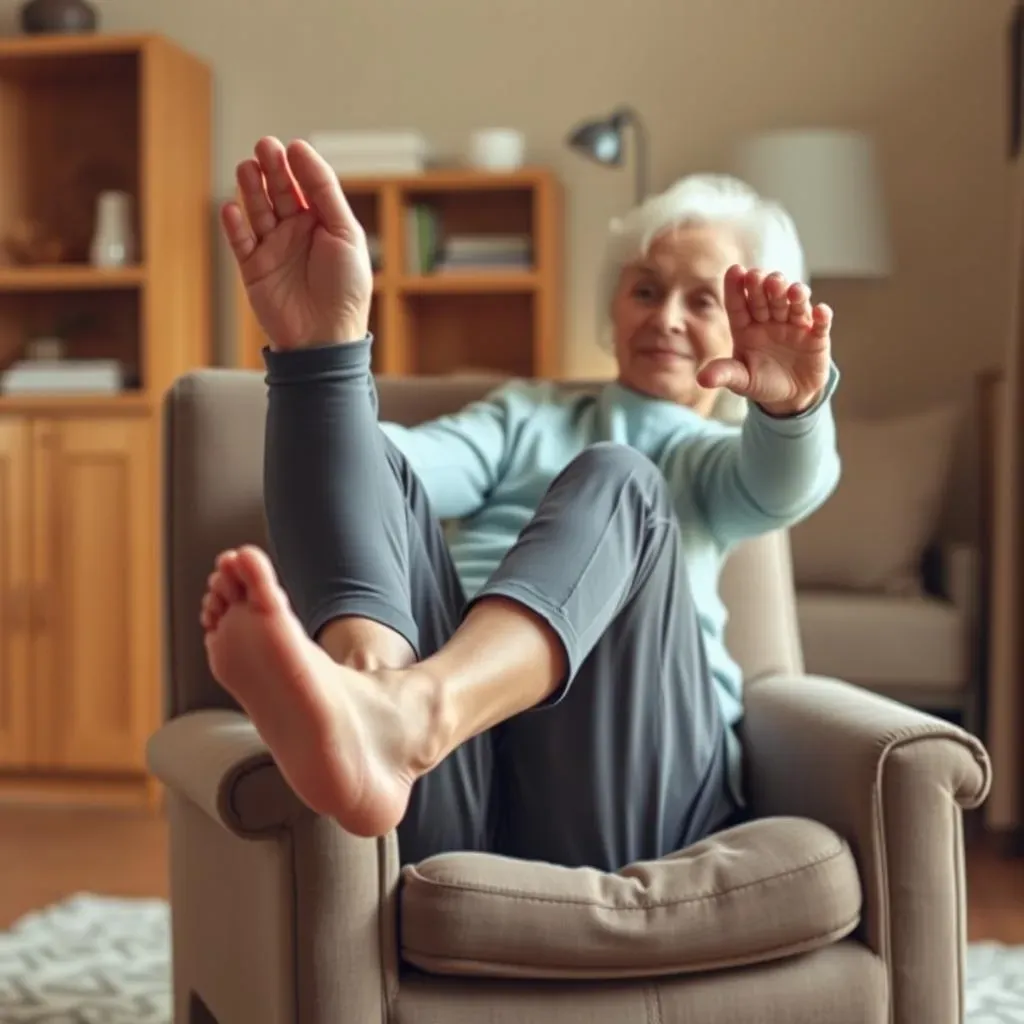
Effective Home Leg Exercises for Seniors
Ankle Circles and Hip Marches
Alright, let's get into the good stuff: exercises! We're starting with ankle circles, which are super gentle and perfect for warming up those lower legs. Just sit in a chair, lift one foot, and make circles with your ankle, first clockwise, then counterclockwise. It's like giving your ankles a little massage. Then, we'll move to hip marching. This one’s simple too – just sit tall in your chair and lift one knee up towards your chest, then the other, like you're marching in place. It's great for getting your hips moving and blood flowing. These might seem small, but they're crucial for building a strong foundation before we move to the more challenging stuff. Remember, we're not trying to win a race here; we're aiming for smooth, controlled movements.
I remember when I first started doing these, my ankles felt so stiff, like rusty hinges. But after a few weeks of doing these simple exercises, they felt so much more flexible. It’s the little things that make a big difference, trust me. These exercises are not only about flexibility; they also help with balance, which is a big win for seniors. It’s like you’re waking up your legs, getting them ready for anything. Think of it as giving your legs a gentle nudge to say, "Hey, let's get moving!"
Standing Knee Flexion and Side Hip Raises
Okay, now let's stand up – carefully, of course! We're doing standing knee flexion, which is just bending your knee and bringing your heel towards your butt. You can hold onto a chair or wall for balance if you need to, and that's totally fine. It’s all about what feels right for you. Then, we’ll do side hip raises. Stand with your feet hip-width apart, and then lift one leg out to the side, keeping it straight. Imagine you're trying to reach for something on the side with your foot. Remember to keep your movements controlled and smooth. Don’t rush it. These exercises are fantastic for building stability and strength in your legs and hips, which are essential for keeping steady on your feet.
I know when I first started doing these, I felt a little wobbly. It’s totally normal to feel like that, especially if you haven’t been doing a lot of leg exercises. The key is to be patient and consistent. I've found that doing these exercises by a mirror can be helpful. It's like having my own personal trainer, making sure my form is good, and helps me feel more confident in the movements. It’s all about progress, not perfection.
Exercise | Benefits | How to do it |
|---|---|---|
Ankle Circles | Improves ankle flexibility and warm-up | Sit and rotate ankles clockwise, then counterclockwise |
Hip Marches | Increases hip mobility and circulation | Sit and lift knees towards your chest alternately |
Standing Knee Flexion | Strengthens hamstrings and improves balance | Stand and bend one knee, bringing heel towards butt |
Side Hip Raises | Strengthens hip abductors and stability | Stand and lift one leg to the side, keeping it straight |
Sit-to-Stands and Partial Squats
Now, let's move on to some functional exercises that mimic everyday movements. Sit-to-stands are a great example: simply sit in a chair and then stand up without using your hands if you can. It’s like practicing getting out of a chair, which is something we do all the time. If you need to use your hands, that's okay too, it's about progressing at your own pace. Next up are partial squats. Stand with your feet shoulder-width apart, and then bend your knees slightly, like you're about to sit down in a chair, but don’t go too far. These are all about building strength in your thighs and glutes, which are so important for overall stability.
These exercises are like the building blocks for everyday activities. The more you practice them, the easier they become. I remember when I first tried sit-to-stands, it felt like a real challenge. But now, I can do them with so much more ease. It’s like my body has remembered how to move. And that’s the whole point, right? To make our bodies feel more capable, more ready for anything life throws our way. Don’t worry if you need to start small, even a little bit of movement makes a difference. Remember, we’re all in this together.
How to Safely Start Leg Workouts at Home
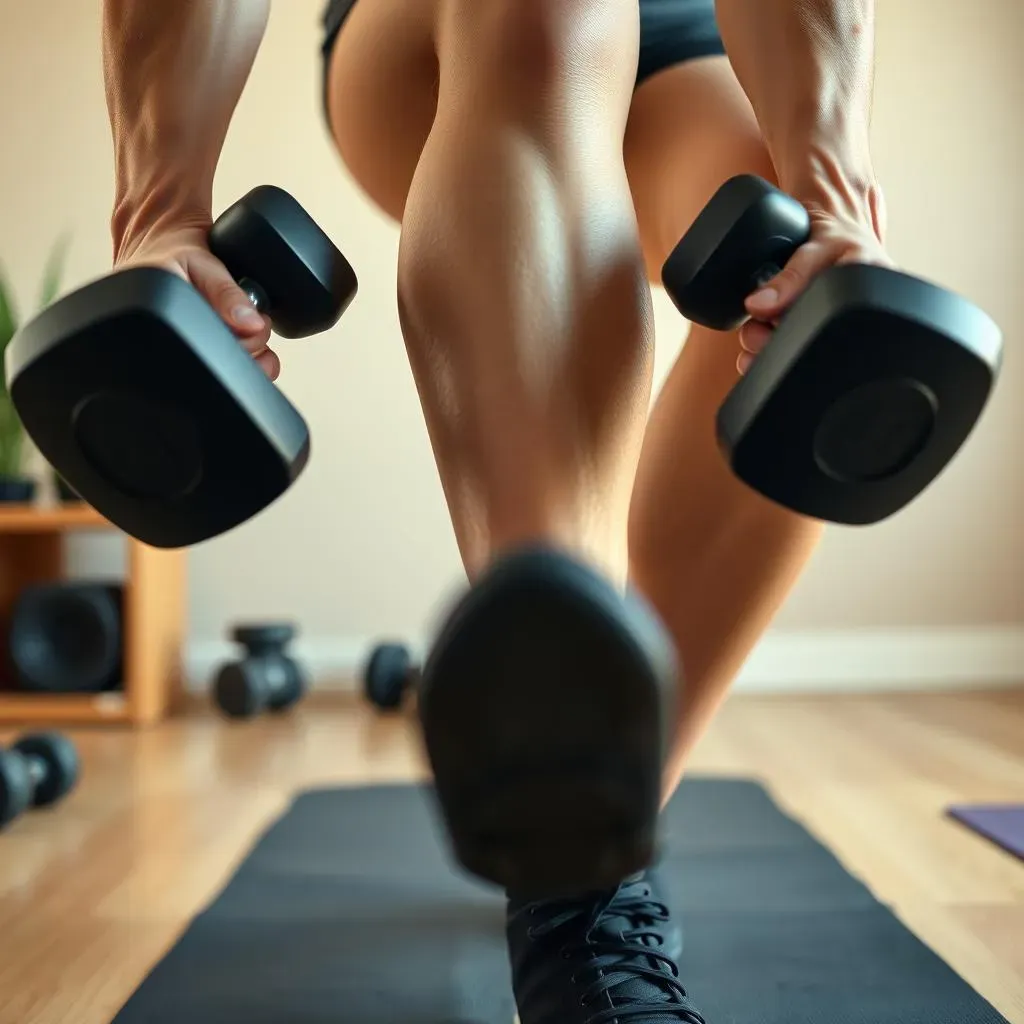
How to Safely Start Leg Workouts at Home
Listen to Your Body
Okay, so you're pumped to get started, that's awesome! But before you jump in, let's talk safety. The number one rule is: listen to your body. It's like having a built-in personal trainer that knows exactly what you need. If something hurts, don’t push through it. Pain is your body's way of saying, "Hey, slow down!" Start slow, with fewer repetitions and sets than you think you can handle. I've made the mistake of pushing too hard too soon, and trust me, it’s not worth the soreness and potential injury. It's way better to start with a gentle approach and gradually build up strength than to overdo it and end up on the couch for a week.
Think of your body like a car: you wouldn't drive it at full speed right after starting the engine, would you? You need to warm it up first. The same goes for our bodies. A light warm-up, like some gentle walking or arm circles, can get your muscles ready for action. And remember, it’s not a race. Focus on doing each exercise with proper form, rather than trying to do them quickly or with a lot of repetitions. I once tried to do too many squats and my knees were not happy with me for days, it’s a lesson I will not forget. It's all about moving mindfully and making sure you’re comfortable with each movement before you increase the intensity.
Start Slow and Steady
Now, let's talk about pacing. It's tempting to want to go from zero to hero overnight, but trust me, slow and steady wins the race. When you first start, aim for just a few repetitions of each exercise, and maybe do these exercises two or three times a week. The goal is to get your body used to the movements and build a solid foundation. I know it might seem like you're not doing much, but your body is adjusting and getting stronger. Consistency is key, and it’s way better to be consistent with smaller workouts than to burn out with intense sessions and then stop altogether. It’s like building a house, you have to lay the foundation before you start building the walls.
Also, remember to give yourself rest days. Your muscles need time to recover and rebuild. Working out every day might seem like a good idea, but it can actually be counterproductive. Rest days allow your body to repair itself and come back stronger. Think of them as a crucial part of your workout routine. I’ve found that alternating workout days with rest days has made a huge difference in my energy levels and how quickly I see results. Plus, it gives me something to look forward to on my workout days. It's all about finding that balance that works for you.
Tip | Why it Matters |
|---|---|
Start with fewer reps and sets | Prevents overexertion and injury |
Focus on proper form | Ensures you're working the correct muscles |
Take rest days | Allows your body to recover and rebuild |
Warm-up before you start | Prepares your muscles for activity |
Maximize Your Leg Workouts at Home: Tips and Tricks
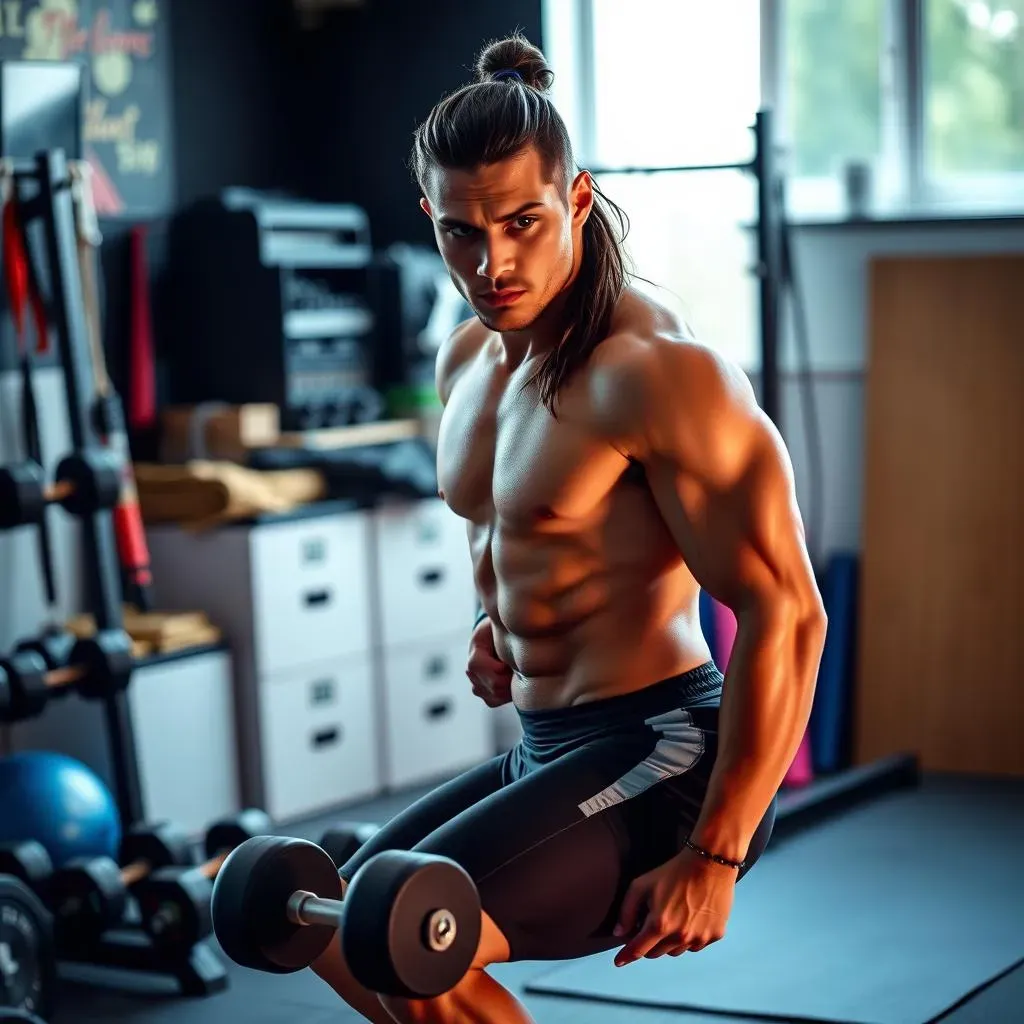
Maximize Your Leg Workouts at Home: Tips and Tricks
Alright, let's talk about how to take your leg workouts to the next level. It's not just about doing the exercises; it's about doing them smarter. One of the best things you can do is to add some variety. Instead of doing the same exercises every single time, try mixing things up. Maybe one day you do more reps, the next day you focus on holding each move for a longer time. You could also try adding some light weights, like a water bottle or a can of soup, to make things a bit more challenging. I've found that changing things up keeps my workouts interesting and stops me from getting bored. Plus, it challenges my muscles in different ways, which is great for building strength.
Another great tip is to pay close attention to how you're breathing during your workouts. It might seem small, but it makes a big difference. Inhale when you relax and exhale when you exert yourself. For example, when you are doing a squat, breathe in as you lower down and breathe out as you stand up. It's like giving your muscles an extra boost of energy. And remember, consistency is key. It's way better to do a little bit each day than to try to cram everything into one long session. And finally, make sure you're staying hydrated. Drinking enough water is crucial for keeping your muscles happy and healthy. I always keep a water bottle nearby during my workouts and sip on it regularly. It’s like giving your body the fuel it needs to keep going.
Tip | Why it Matters |
|---|---|
Add Variety | Prevents boredom and challenges muscles differently |
Pay attention to your breathing | Improves workout performance and energy levels |
Stay hydrated | Keeps muscles healthy and prevents fatigue |
Be consistent | Helps in making gradual progress and building long-term strength |
